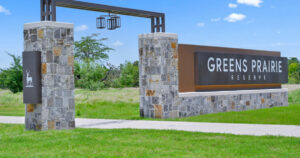Moonlit Celebration Lights Up College Station
As the sun dipped below the horizon and the weekend campus hustle slowed down, College Station transformed into a celestial wonderland. On the evening of September 14, the Texas A&M University Astronomy and Physics Department welcomed students and community members to NASA’s International Observe the Moon Night. The excitement in the air was palpable as attendees started to gather at Simpson Drill Field, eager to uncover the mysteries of our closest celestial neighbor.
Engaging Activities Spark Interest
The festivities kicked off just as darkness settled in, showcasing an array of student-led educational demonstrations that turned complex astronomy topics into fun, hands-on learning experiences. One of the most popular activities was moon crater painting, where participants delightedly blasted paint-infused sponges onto a canvas that captured the essence of the moon’s south polar region. This vibrant artwork is destined for The Art of Planetary Science 2025 exhibition at the University of Arizona, marking a fusion of science and art.
Dr. Allison McGraw, a physics lab manager, highlighted the significance of focusing on the south pole, where future lunar missions, including the much-anticipated Artemis 3 mission, will land. “We are creating a map to inspire people to learn about the south pole,” McGraw explained. “It’s an exciting time for lunar exploration as we bring both males and females back to the moon.”
Exploring Physics Made Fun
University students contributed their knowledge about various physics concepts throughout the evening. Caitlin Fullerton, a physics senior, led a demonstration of the fabric of spacetime that captivated everyone. “Our goal is to present physics in a way that’s easy for everyone to understand,” Fullerton said with enthusiasm. “Physics doesn’t have to be intimidating! We want people to feel comfortable engaging with these concepts.”
As night deepened, visitors flocked to numerous telescopes set up around the field, eager to catch a glimpse of the moon in its stunning waxing gibbous phase. Even the overcast skies couldn’t dampen the spirits of those attending. Many found joy in simply mingling and sharing thoughts about the universe.
An Unforgettable Experience
For students like material science senior, Noor Mohamed, the event was a unique opportunity. “Most people interested in space don’t have the resources to see the moon up close,” he shared. “This event provides a chance for the community to see something spectacular.” And while some attendees squeezed glimpses of the moon through fleeting breaks in the clouds, others tuned into a live-stream hosted by Dr. McGraw. She captured everyone’s attention by discussing the origin of the International Observe the Moon Night, which came about after NASA scientists were excited by high-resolution images from a lunar reconnaissance orbiter.
Special Moments Under the Moonlight
A highlight of the evening was showcasing an authentic moon rock sample from NASA’s Apollo 15 mission, along with the much-anticipated results of the NASA Moon Tree naming competition. Participants from around the world submitted names for a sweetgum sapling that orbited the Earth last year, and it was officially named “Gerry” in honor of Gerry Griffin, an Apollo flight director from the class of 1956. McGraw expressed joy at this fitting tribute: “It’s wonderful to have this connection to our space exploration history.”
A Harmonious Conclusion
As the event neared its end, the air filled with the soothing sounds of the Moon’s Symphony, composed by Amanda Lee Falkenberg, whose passion for the moon missions infuses her music. Aerospace engineering senior, Collin Stafford, described the feelings that swell while peering through a telescope. “There’s a sense of wonder in seeing something that has been up there your entire life — but experiencing it in a whole new way,” he reflected.
As the celebration concluded, it was clear that NASA’s International Observe the Moon Night at Texas A&M was not just about gazing at the moon; it was about fostering a sense of community, curiosity, and appreciation for the endless mysteries of the universe. This magical evening provided a reminder of how easily science can bring people together, making even the vast cosmos feel just a little closer to home.








